10X Meisterstück Safety

An impressive line up of safety pens from Joudenali's collection. No. 25-45 series to the left, and the 108, 104G, 106G, and 108G to the right
The 10x Meisterstück series was introduced in 1935, likely as a successor to the original No. 20 to No. 40 range of Meisterstück safety pens. A 1936 Montblanc catalogue even includes the label "Frühere Nr." ("Earlier No.") next to each 10x model, indicating the earlier counterpart it replaced — such as the No. 20, 25, 30, 35, or 40. The earliest versions of the 10x closely resembled their predecessors, featuring domed caps, large rounded stars, and other familiar design elements. These were produced only for a few months before a rapid redesign in 1936, and hence these transitional models are very rare to find today.
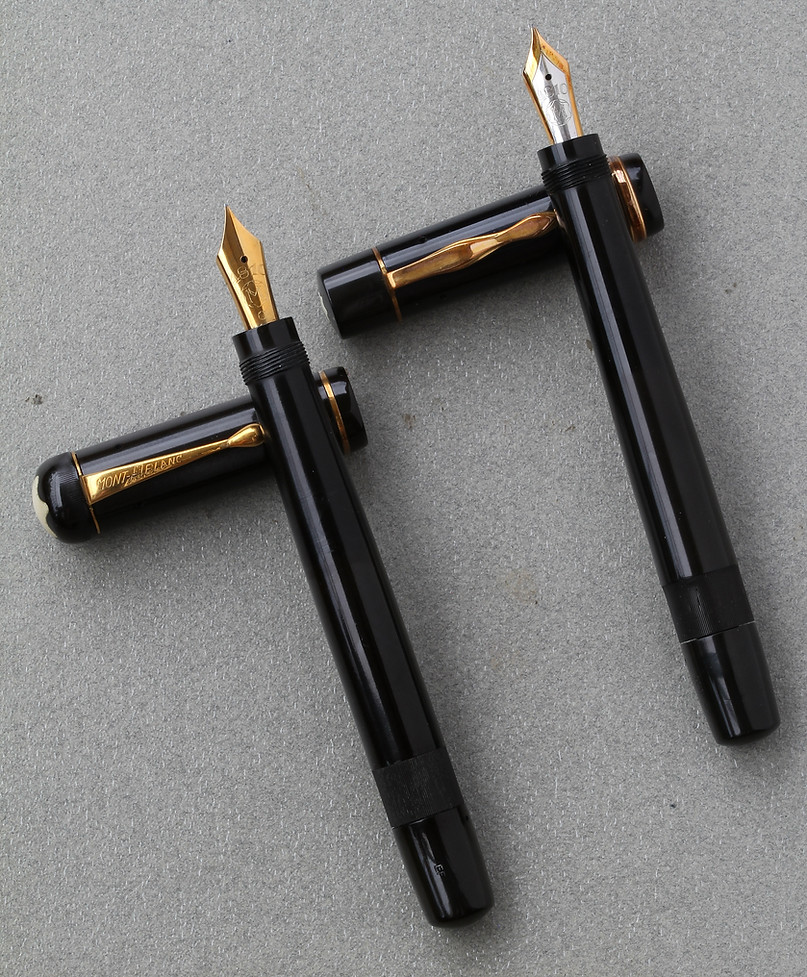
Transitional 108 (bottom) and the iterated design 108G (top), from the personal collection of Joudenali

Transitional 102, as featured in Collectible Stars I (link)
The 10x series was relaunched in 1936 with several hallmark features that would go on to define the 12x and 13x Meisterstück lines. What visually sets this new generation of pens apart from the pre-1935 designs is the shift in cap aesthetics: flat-top caps replaced domed ones, smaller pointed stars took the place of large rounded stars, slightly tapering caps gave way to straighter profiles, and two thin flush cap bands were replaced by a broad, raised single band — often paired with the new ‘Tie Clip’ style clip. And not to forget, the 10x also introduced the now-iconic two-tone nib — a bi-colour combination of gold and rhodium plating — a striking departure from the earlier all-gold nibs. These updates laid the foundation for a design language that many collectors consider the hallmark of Montblanc’s golden era.

1936 Montblanc catalogue
Most of the production took place between 1935 and 1936, with a few models continuing until around 1939. However, the short production run meant that relatively few pens were made, making surviving examples quite scarce today. The 10x series was available in the two finishes - glatte (G) i.e smooth and schraffiert (S) i.e guilloched or hatched design.
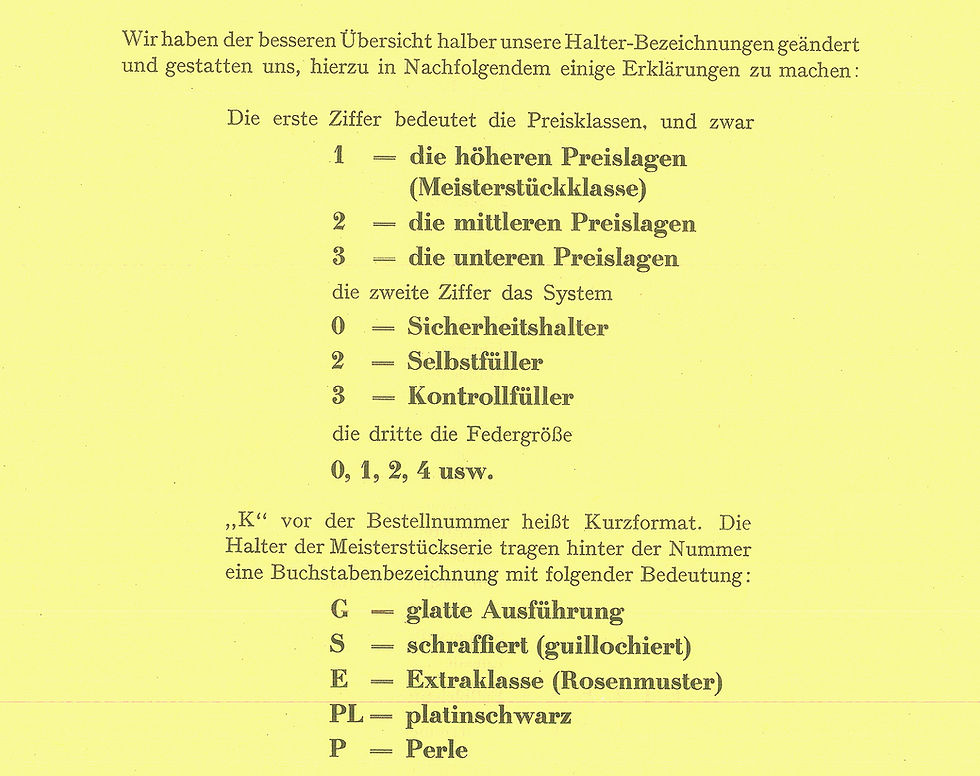
The Montblanc naming convention explained in a 1936 catalogue


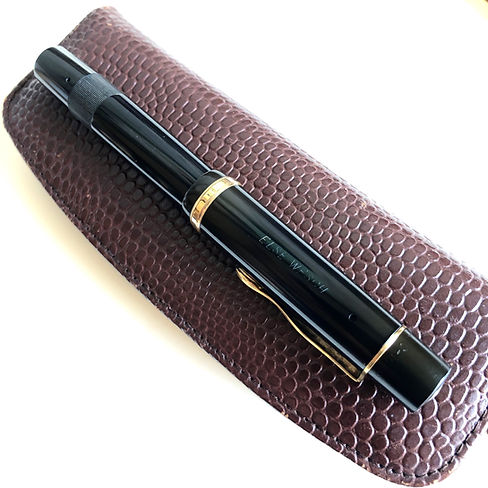





102G from my personal collection
The 1936 catalogue below shows that the 104 also came in the less common Extraklasse (E) variation, which had a rose pattern chasing called Rosenmuster.

104E with rose pattern imprint, as featured in Collectible Stars I (link)


1936 Montblanc catalogue
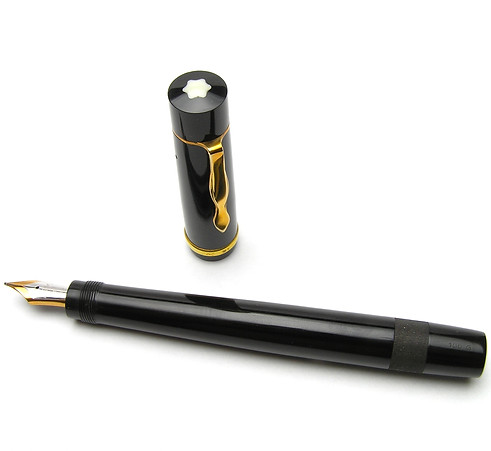
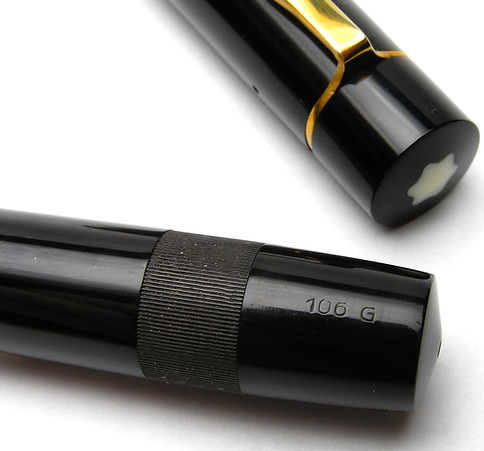
A lovely 106G from the collection of Kawuska
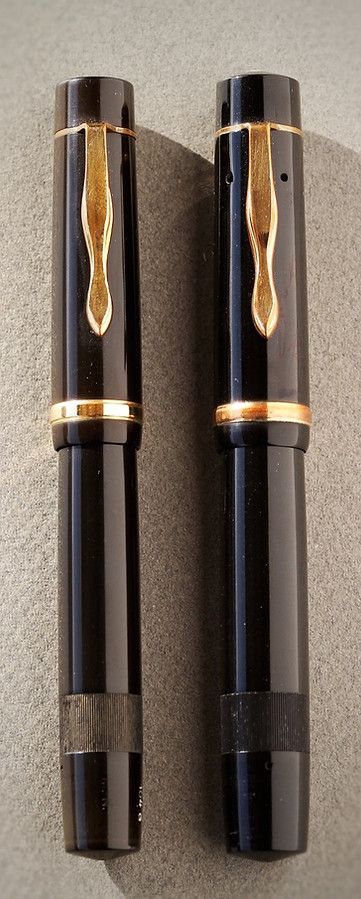

A beautiful 104G and 106G belonging to Joudenali

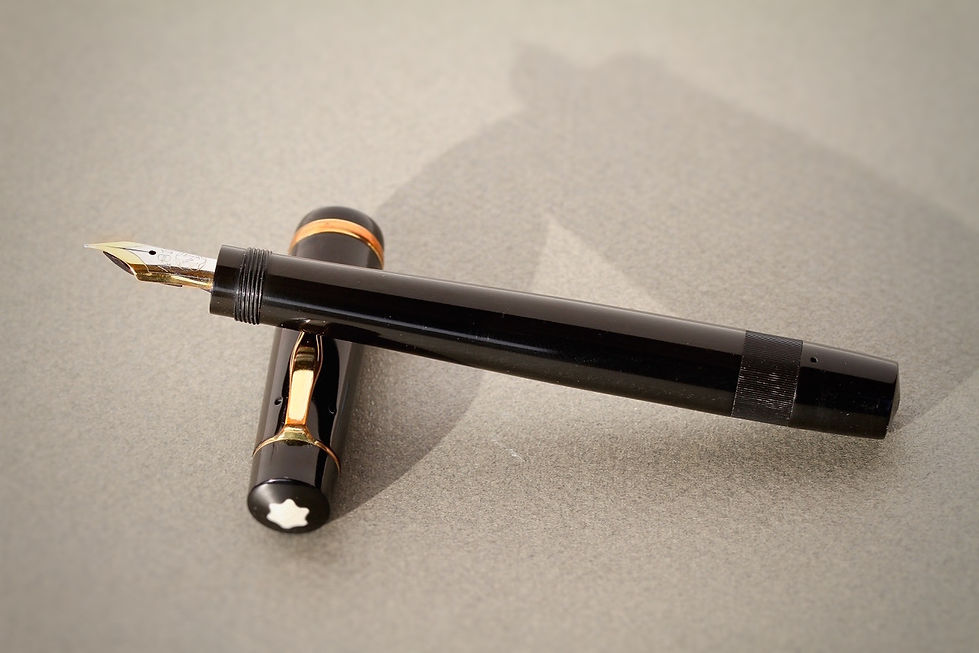
A beautiful 106G belonging to Joudenali

106S, as featured in Collectible Stars I (link)
The 10x series was priced very closely with its younger siblings - the 12x and 13x. In the 1938 catalogue below, we see that all three series existed and were actively sold in the market at the same time. Notice that the 104 and the more modern 124 push-knob filler sold for the same price of 22.50 Reichsmark (RM), while the piston filler 134 sold for just a little more at RM 25. Maybe the piston technology and ink window warranted a higher price. Also, see how the three pens look all but identical in key design elements. Also, notice how the 104 is much longer than the 124 and 134 when posted!

1938 Montblanc catalogue
Finally, we have the 108 - the largest model in the series, and similar in dimension to its predecessor – the No. 40 Meisterstück safety. The 1936 catalogue shows it available in the 'G' and 'S' variant. Below we see a very rare example of the transitional model that was made for only a few months in 1935, and we also see an example of the iterated design in 1936.

Transitional 108 (bottom) and the iterated design 108G (top), from the personal collection of Joudenali
For bibliography, see Resources page -->link